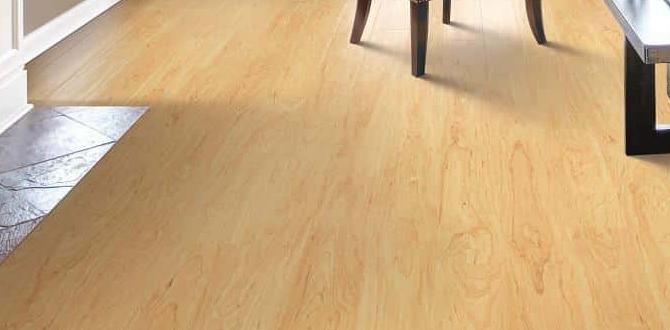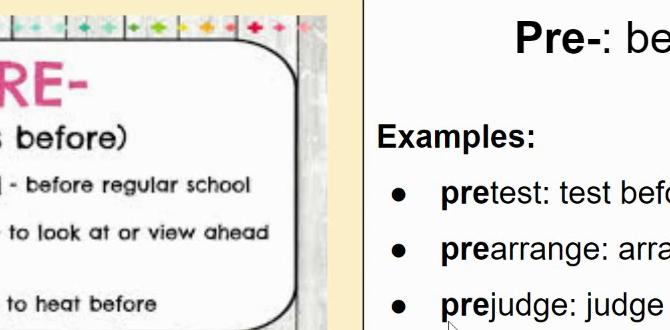Choosing the right gauge nails for your brad nailer is simple once you understand how gauge affects nail size and holding power. The lower the gauge number, the thicker the nail. Smaller gauge nails (higher numbers) are best for delicate trim and molding, while thicker nails (lower numbers) offer more strength for framing or heavier applications. This guide will help you pick the perfect nail every time!
Hey there, fellow DIYers and woodworking enthusiasts! Jack Shaffer here from Nailerguy. Ever stared at a wall of tiny boxes filled with nails, feeling completely lost about which ones to grab for your brad nailer project? You’re not alone! It’s a common stumbling block when you’re starting out, and honestly, it can make a simple project feel a lot more complicated than it needs to be.
The good news is, once you get the hang of it, choosing the right gauge nails is straightforward. It’s all about understanding what each nail size is best suited for. We’ll break down the mystery, arm you with the knowledge you need, and get you confidently selecting the perfect nails for everything from delicate trim work to more robust tasks.
Ready to master brad nail selection? Let’s dive in and make sure your projects look professional and hold up beautifully!
Table of Contents
Understanding Nail Gauge: The Basics
When we talk about nail gauge, we’re essentially talking about the thickness of the nail. This might seem counterintuitive at first because, in the world of nails, a lower gauge number actually means a thicker nail. Think of it like this: a larger number means a thinner wire, and a smaller number means a thicker wire.
Why does this matter so much? The thickness of the nail directly impacts its strength and how it performs in your woodworking project. A thinner nail is less likely to split delicate wood and leaves a smaller hole, which is ideal for fine trim or decorative pieces. A thicker nail, on the other hand, provides more holding power and is better for more substantial applications where you need a stronger bond.
For brad nailers specifically, we’re usually dealing with finer nails compared to framing or finishing nailers. This makes understanding gauge even more critical, as these nailers are designed for lighter-duty tasks where precision and a clean finish are often key.
Why Nail Gauge is Crucial for Brad Nailers
Using the correct nail gauge for your brad nailer isn’t just about aesthetics; it’s about the success and longevity of your project. Here’s why it’s so important:
- Preventing Wood Split: Thicker nails (lower gauge numbers) can easily split thin, delicate wood during insertion. Opting for a thinner nail (higher gauge number) in these situations will prevent unsightly cracks and ensure a cleaner finish.
- Holding Power: While brad nailers are for lighter tasks, you still need your project to hold together. A nail that’s too thin might not have enough sheer strength for the intended purpose, especially if it’s under any stress.
- Aesthetics: A nail that’s too thick will create a larger hole, which can be difficult to fill and hide, detracting from the overall look of your work. Thinner nails create almost imperceptible holes.
- Tool Compatibility: Your brad nailer is designed to handle specific nail gauges. Using nails that are too thick can jam the tool, damage it, or fail to drive properly, leading to frustration and potential repairs.
Think of it like choosing the right screwdriver for a screw. Using the wrong one can strip the head or make the job much harder. The same principle applies to nail gauge and your brad nailer.
Common Brad Nailer Nail Gauges Explained
Brad nailers typically use nails ranging from 16-gauge to 23-gauge. Let’s break down what each of these common gauges means and what they’re best used for.
16-Gauge Nails
Description: These are the thickest of the common brad nails. They have a substantial shank for good holding power.
Applications: Ideal for attaching larger trim pieces, baseboards, window and door casings, and where a bit more strength is needed. They are a good all-around choice for many home improvement tasks that a brad nailer is suited for.
Pros: Excellent holding power, more durable for slightly heavier applications.
Cons: Can be more prone to splitting softer woods, leaves a slightly larger hole than finer gauges.
18-Gauge Nails
Description: This is probably the most popular and versatile brad nail size. They are thinner than 16-gauge nails but still offer good strength.
Applications: Perfect for general trim work, crown molding, chair rails, cabinet assembly, and even some lighter framing tasks like building small decorative boxes.
Pros: Good balance of holding power and minimal wood damage, versatile for a wide range of projects.
Cons: Less holding power than 16-gauge for very heavy applications.
20-Gauge Nails (or 23-Gauge Pins)
Description: These are much finer and thinner nails, often referred to as “pins.” They are almost wire-like in thickness.
Applications: Excellent for very delicate trim, thin moldings, picture frames, small craft projects, and applications where a virtually invisible fastener is required. They are also great for attaching thin decorative elements or reapplying trim that has already been nailed.
Pros: Minimal to no wood splitting, leaves extremely small holes that are easy to fill or often don’t need filling at all.
Cons: Very little holding power, not suitable for structural or load-bearing applications.
23-Gauge Nails (Micro-Pinner)
Description: The thinnest of the common options, these are essentially headless pins. They are incredibly fine and ideal for the most delicate of work.
Applications: Perfect for attaching small, intricate mouldings, model building, intricate craft projects, and situations where even an 18-gauge hole would be too noticeable.
Pros: Virtually invisible fastener, zero risk of splitting even the most delicate wood.
Cons: No real holding power on their own; often used in conjunction with glue.
Brad Nailer Nail Compatibility Chart
To give you a quick visual reference, here’s a chart summarizing the common brad nail gauges, their typical uses, and key characteristics.
| Nail Gauge | Nail Diameter (Approx.) | Typical Applications | Holding Power | Risk of Wood Split | Hole Size |
|---|---|---|---|---|---|
| 16-Gauge | 0.062 inches (1.57 mm) | Baseboards, Window/Door Casings, Larger Trim | High | Moderate | Moderate |
| 18-Gauge | 0.048 inches (1.22 mm) | General Trim, Crown Molding, Cabinetry, Chair Rails | Medium | Low to Moderate | Small |
| 20-Gauge | 0.034 inches (0.86 mm) | Thin Moldings, Craft Projects, Re-nailing Trim | Low | Very Low | Very Small |
| 23-Gauge | 0.026 inches (0.66 mm) | Intricate Trim, Model Building, Picture Frames | Very Low (often needs glue) | Extremely Low | Minimal / Invisible |
Remember, these are approximate diameters. Manufacturers may have slight variations, so always check the specifications for your specific nail brand.
Choosing the Right Nail Length
Beyond gauge, nail length is another critical factor. The general rule of thumb is to choose a nail that’s long enough to penetrate the material you’re fastening and sink at least 1/2 to 3/4 of an inch into the piece behind it for adequate holding power.
For trim work: If you’re attaching a 1/2-inch thick piece of trim to a stud, a 1.5-inch nail would be a good starting point. This would leave about 1 inch embedded in the stud.
For delicate projects: Shorter nails are often used for crafts or very thin materials, where you might only need the nail to go through one piece or just barely into the second.
Avoid overdriving: When you drive a nail too deep, the head can sink into the wood, damaging the surface. This is especially true with softer woods. Conversely, if the nail doesn’t go in far enough, it won’t hold securely.
Always consider the total thickness of the materials you are joining and the substrate you are nailing into. It’s a good idea to keep a variety of nail lengths on hand for different jobs.
When to Use Which Gauge: Project Examples
Let’s walk through some common DIY projects and discuss which nail gauge would be the best fit.
Project 1: Installing Baseboards
Material Thickness: Baseboards are typically 1/2 inch to 3/4 inch thick.
Substrate: Usually nailed into wall studs and sometimes glued to the drywall.
Recommended Gauge: 16-gauge.
Reasoning: Baseboards need good holding power as they are often bumped and can bear some weight (e.g., if someone leans on them). 16-gauge nails offer the strength needed. If you’re working with very soft wood baseboards, and you’re concerned about splitting, an 18-gauge nail might be an alternative, especially if you’re also using a strong wood glue. For length, aim for nails that are 1.5 to 2 inches long to ensure good penetration into the studs.
Project 2: Attaching Crown Molding
Material Thickness: Crown molding can vary, but it’s often relatively thin.
Substrate: Nailing into ceiling joists and wall studs.
Recommended Gauge: 18-gauge.
Reasoning: Crown molding can be somewhat delicate. 18-gauge nails provide a good balance of holding strength without being so thick that they split the molding. The smaller hole is also easier to conceal. For length, you’ll want nails that reach the joists and studs securely, typically around 1.5 to 2 inches.
Project 3: Assembling a Small Wood Box or Shelf
Material Thickness: Often 1/2 inch to 3/4 inch plywood or solid wood.
Substrate: Nailing into solid wood edges or panels.
Recommended Gauge: 18-gauge or 20-gauge.
Reasoning: For a simple box or shelf, 18-gauge nails are usually sufficient, especially if wood glue is also used. If the wood is particularly thin or you want a very clean, almost invisible fastener, 20-gauge nails can work well. Length will depend on the wood thickness; for 1/2-inch material, 1-inch or 1.25-inch nails are common.
Project 4: Attaching Small Decorative Trim (e.g., Picture Frame Molding)
Material Thickness: Can be very thin, sometimes only 1/4 inch.
Substrate: Often nailed into a backing frame or into other trim.
Recommended Gauge: 20-gauge or 23-gauge.
* Reasoning: For very fine, delicate trim, splitting is a major concern. 20-gauge or even 23-gauge headless pins are ideal here because they create a nearly invisible fastening point and won’t damage the wood. These are often used with glue for added strength as the nails themselves provide minimal grip.
Pro Tip: When in doubt, it’s often safer to start with a thinner gauge nail and test it on a scrap piece of wood. If it feels like it doesn’t have enough holding power, you can always try a thicker gauge.
Tips for Using Your Brad Nailer Safely and Effectively
Beyond choosing the right nails, using your brad nailer correctly is key to fantastic results. Here are some essential tips:
- Read Your Manual: Every tool is slightly different. Familiarize yourself with your specific brad nailer’s operating instructions and safety features. For instance, some nailers have sequential firing modes for safety and precision, while others offer bump firing for speed.
- Wear Safety Glasses: This is non-negotiable! Always wear safety glasses or a face shield to protect your eyes from flying debris or ricocheting nails. Wood dust and fragments can cause serious injury.
- Proper Grip and Stance: Hold the nailer firmly but don’t squeeze the trigger until you’re ready to fire. Ensure a stable stance to control the tool effectively.
- Test on Scrap Wood: Before you start on your actual project, always test fire your brad nailer on a piece of scrap wood of the same type and thickness. This allows you to check nail depth and ensure the gauge is correct. Adjust your tool’s depth settings as needed. Many brad nailers have a depth adjustment wheel.
- Nail Placement: Aim to drive nails at a slight angle into the substrate when possible, especially when nailing into edges or thinner pieces, as this can improve holding power and reduce the chance of blowout. For trim, try to hit the underlying studs or framing whenever possible for the strongest hold.
- Don’t Overdrive: Be mindful of your tool’s depth setting. If nails are sinking too deep and damaging the wood, reduce the pressure or adjust the depth setting on the nailer. If they aren’t sinking enough, increase the pressure or adjust depth.
- Check Nail Orientation: Ensure the nails are loaded correctly in the magazine and are facing the right direction for your specific tool.
- Keep Fingers Away: Never place your fingers near the nose of the nailer or in the path of the nail.
- Work in a Well-Ventilated Area: If you’re using an air-powered brad nailer, ensure good ventilation for the compressor and any adhesives you might be using.
For more detailed safety guidelines on power tools, the Occupational Safety and Health Administration (OSHA) provides extensive resources within their Powered Industrial Equipment standards, including specifics on pneumatic tools.
Troubleshooting Common Brad Nailer Issues Related to Nails
Even with the right nails, you might run into a few snags. Here are some common issues and how to fix them:
Issue: Nails are not driving fully.
- Possible Cause: Incorrect air pressure (if pneumatic) or battery charge (if cordless).
- Solution: Check your compressor’s pressure gauge (typically 70-120 PSI for pneumatic nailers) or ensure your battery is fully charged.
- Possible Cause: Wrong nail gauge for the tool or material.
- Solution: Double-check that you’re using nails of the gauge your brad nailer is designed for. Try a softer wood or a different nail source if you suspect faulty nails.
- Possible Cause: Depth adjustment is set too shallow.
- Solution: Increase the depth setting on your brad nailer.
Issue: Nails are splitting the wood.
- Possible Cause: Nail gauge is too thick for the material.
- Solution: Switch to a thinner gauge nail (e.g., from 16-gauge to 18-gauge).
- Possible Cause: Nail is being driven too close to the edge of the wood.
- Solution: Move the nail placement slightly away from the edge.
- Possible Cause: Nail is too long, causing it to hit a knot or dense area unexpectedly.
- Solution: Try a shorter nail.
- Possible Cause: Wood is very dry or knotty.
- Solution: Consider pre-drilling pilot holes, especially for very hard woods or near knots. You can also try using a slightly lower air pressure setting.
Issue: Nails are jamming in the tool.
- Possible Cause: Using nails of the wrong size or brand.
- Solution: Ensure you are using the specified gauge and length for your tool. Using incorrect nails is the most common reason for jams.
- Possible Cause: Debris or bent nails in the magazine.
- Solution: Clear the magazine and check for any bent or damaged nails.
- Possible Cause: Tool needs cleaning or lubrication.
- Solution: Refer to your tool’s manual for cleaning and maintenance instructions.
Issue: Nails are not being driven straight.
- Possible Cause: Improper contact with the workpiece.
- Solution: Ensure the nose of the brad nailer is held flat and flush against the surface of the wood before firing.
- Possible Cause: Driving nails at an angle where the nail




